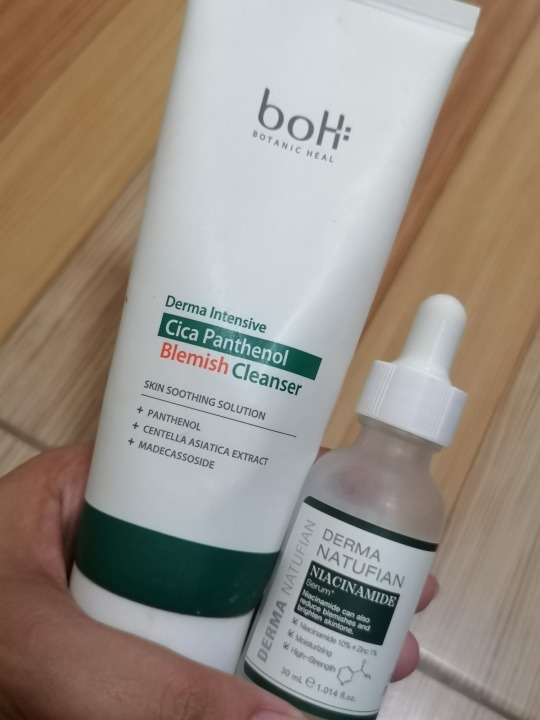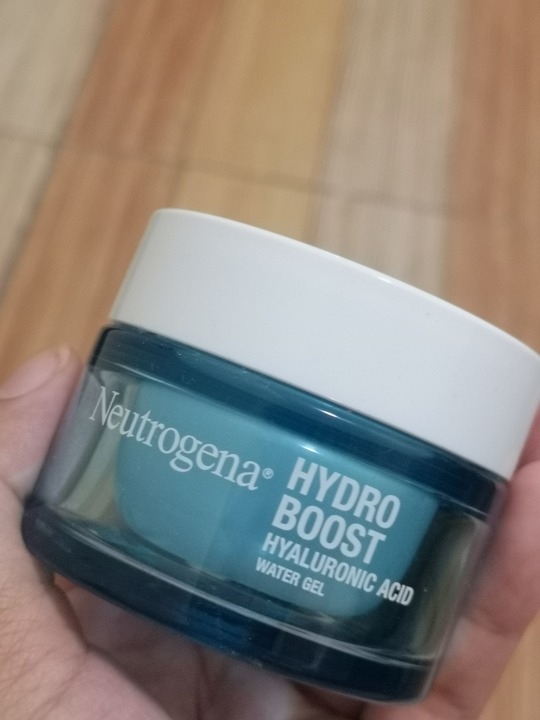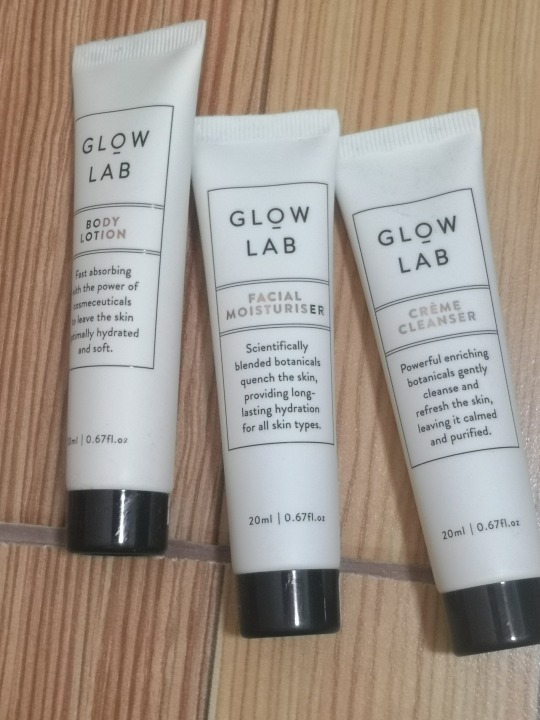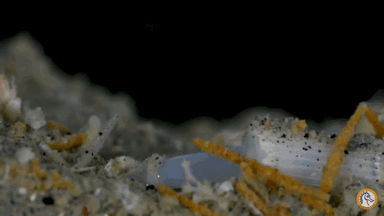#Natufians
Explore tagged Tumblr posts
Text
THE GENETIC ORIGINS OF PALESTINIANS
youtube
Note: This isn't being shared because of a belief in genetically-determined borders, but an attempt to eradicate the myth that Palestinians are foreign to the Levant because of their language or religion.
#Palestine#Palestinian#Israel#Gaza#West Bank#Canaan#Canaanites#Natufians#Peleset#Philistines#Philistia#from the river to the sea#Youtube
3 notes
·
View notes
Text

Natufian scuplture from from around 11,000, credited as the first artwork portraying sex
Found in Jericho, Palestine
#natufians were freaky#stone age#copper age#bronze age#neolithic#the stone age#natufian#natufian culture#sculpture#old art#history#historic#prehistoric#palestine#jericho#mesopotamia#archaeology#anthropology
1K notes
·
View notes
Text



First Civilization formal wear
#happy tree friends#htf#htf nergal#htf geshtu#Htf dumuzi#htf be brave#I’ll color em someday#nergals is based off of ancient Minoan fashion#Geshtus is Sumerian/akkadian#dumuzi is a mix of natufian and ancient Egyptian#loretime
112 notes
·
View notes
Text

Annoyed Natufian Woman
A Natufian woman from the Mesolithic Fertile Crescent rests on a log, sulking in an annoyed mood. I drew this to cope with my own irritated mood after encountering yet another example of ignorance online, and it turned out to be quite therapeutic indeed.
#natufian#mesolithic#levant#fertile crescent#prehistoric#archaeology#anthropology#afroasiatic#black woman#woman of color#dark skin#bipoc#digital art#art#vent art
15 notes
·
View notes
Text
fermenting things is so fun. anyone heard about this ?
3 notes
·
View notes
Text

Khiamian Culture: this succeeded the Natufian as a sedentary culture which emerged as the farming revolution was gradually taking hold, alongside the highly-localised Shepherd Neolithic culture.
#history#historyfiles#neolithic#khiamian#neolithic farming#natufian#ancient world#shepherd neolithic
3 notes
·
View notes
Text
okay so i heard this story before, but also remembered it being considered as a somewhat loose hypothesis, popularized by books such as "Liquid Bread: Beer and Brewing in Cross-Cultural Perspective". i wander if @panecultus heard about this before the discovery of 14,000-year-old piece of bread in jordan?
anyhow, the more honest claim will be "we still don't know". As this study sums up, the invention of flour predates brewing and domestication significantly (c. 23 vs. 14.6–11.7 ka cal BP), and natufians in jordan are pretty obviously not mesopotamian. fermentation for alcoholic purposes could still be, and likely is, related to sourdough bread starters, but i haven't really seen any good evidence to legitimately back up the "beer lead to bread" claim, though to be clear it was definitely an important part of human diets since early on. if you have a credible source that addresses recent findings that would be incredible and i would really like to read it!
Invention of bread is weird bc it’s like some Neolithic ppl were like “hey you know that tall grass thing that’s sorta edible but not really how about we take it and grind it into a very very fine powder which is extra backbreaking right now bc the wheel won’t be invented for awhile and then we mix it with water and heat it up and you know what let’s also toss some mold in there just to see what happens”
40K notes
·
View notes
Link
0 notes
Text






PHOTOS ARE TAKEN ON AUGUST 2023 (some emptied/expired on or before Aug 2023)
WHAT IS IT: Skin Care
EvoLudern Micellar Cleansing Water
7/10
Alcohol free
Can remove waterproof makeup (ex: mascara, I just apply the micellar on a cotton pad, put it over my eyes, let it sit et voila!)
Issy and Co. Cleansing Butter (phase out)
7/10
Has a fragrance
Even if the micellar water removed my mascara I still double cleanse because there might still be some residue I was not able to remove with the micellar water
Does the job well
I did find it inconvenient to scoop out the product
boH Cica Panthenol Blemish Cleanser
Was using this when I was breaking out (July 2023) did not see a difference, I thought it would dry out my acne but it didn't prolly wouldn't go back to this cleanser.
Derma Natufian Niacinamide Serum
Affordable? YES.
Does it work? I think. Since I am breaking out I will have to keep using this product during and post break out because I wanna believe its the kind of product you have to keep using in order to work. PS: I have been using this product for years but I have to pause if I wanted to try out new skincare.
Will I still keep using this? Probably.
Jumiso Yes, I Am Toner
My sister gave this to me to treat my Bacne before buying the body cleanser from Some by Mi. I didn't use it lol it was already half empty when she gave it to me, I didn't mind it but I wanted to use the product I bought to treat my Bacne. When I started breaking out in July of 2023 I did try to use it on my face but it had like a smell that was off I decided to throw it out.
Neutrogena Hydro Boost Hyaluronic Acid Water Gel
I've always wanted to try this out, the second I had, tried it immediately then saw a video on Tiktok that mostly you're just paying for water ang glycerin on it. Was dissapointed of course, I was planning to buy it again if it didn't broke me out. Fyi, I didn't broke out but I did not buy it again because of what I saw on Tiktok.
Belo Acne Pro Pimple Gel
I had this in my skincare pantry for a while now so again when I started breaking out (July 2023) before buying anything else I tried this one but it was yellowish it had been open for some time now I feel like it would still work it still has that slight tinging effect when put on active pimple but I just didn't want to risk it, good thing I had another one so I just used that but then I'm too impatient because the pimple were not drying out fast enough for my liking.
BONUS: Glow Lab Minis
These three came in a kit along with a night cream that had gone bad that I threw out first before I was thinking I could still use these when travelling but ya girl is broke! I ain't going aywhere! No ma'am. I know these are waaay past their expiration date and never been opened so I just said Auf Wiedersehen to them.
#thoughts#photos#tried#tumblr#no filter#oily skin#acne prone skin#pinay skincare#western brand#local brand#korean brand#glow lab#belo beauty#neutrogena#jumiso#issy and co#evoluderm#boh#derma natufian#skincare
1 note
·
View note
Text
I'm reading this book about the history of cats, which starts in prehistory just to be thorough. And it mentions ancient Natufian culture, whose archeological sites have included enough remains of butchered foxes to conclude that they were eaten somewhat regularly. They never ended up becoming domesticated like cats were, but there's a theory that originally, when Natufian people settled down and started to store grains and accumulate garbage heaps, rats and mice showed up like

and then, naturally, wild foxes showed up to the dungheaps after the rats and mice like

and the Natufian people looked at the foxes like

3K notes
·
View notes
Photo

Agriculture in the Fertile Crescent & Mesopotamia
The ancient Near East, and the historical region of the Fertile Crescent in particular, is generally seen as the birthplace of agriculture. The first agricultural evidence comes from the Levant, from where it spread to Mesopotamia, enabling the rise of large-scale cities and empires in the region.
In the 4th millennium BCE, this area was more temperate than it is today, and it had fertile soil, two great rivers (the Euphrates and the Tigris), as well as hills and mountains to the north.
The Origins of Agriculture
The birth of agriculture was a pivotal moment in human history that allowed the earliest civilizations to arise in the Fertile Crescent. Despite it being called the "Cradle of Civilization", we now know that agriculture (and human civilization) also arose independently in other regions of the world. In central America, people domesticated maize and beans, and rice and millet and pigs were first domesticated in China, both without knowledge of earlier advances in the Near East.
The advent of agriculture occurred gradually in the hill country of south-eastern Turkey, western Iran, and the Levant, most likely because the region happened to be home to a wide range of plants and animals that lend themselves to domestication and human consumption. Fig trees were cultivated in modern-day Jordan by around 11,300 BCE. Wheat and goats were domesticated in the Levant by 9000 BCE, followed by peas and lentils in the Fertile Crescent and northern Egypt around 8000 BCE and olive trees in the Eastern Mediterranean by 5000 BCE.
Cattle was first domesticated around 8500 BCE, most likely from wild ox (aurochs) in the Near East. Based on recent genetic analyses of ancient cattle bones, it is estimated that all modern cattle in the world is descended from as few as 80 animals that were originally domesticated.
Horses were domesticated in the western Eurasian steppe by 4000 BCE and spread to the Near East at some point in the late 3rd millennium BCE. Grapevines were domesticated in modern-day Iran around 3500 BCE and spread to the Levant and Egypt by 3000 BCE, marking the end of the transition to agriculture. Even today, 90% of our calories come from foods that were domesticated in this first wave of the agricultural revolution.
Agriculture started most likely because hunter-gatherers who collected grains would have had to take them back to their camp in order to separate the grain from the chaff. During this process, some seeds inevitably fall to the ground. When humans returned to the same campsite the next year, cereals would be growing around the campsite, which they harvested again, causing more seeds to fall. As the amount of cereals around the site increased, the people stayed longer to harvest, eventually turning into semi-nomads with seasonal villages, such as the Natufian culture that flourished circa 12500-9500 BCE.
Over time, some of these semi-nomads decided to stay in their agricultural villages year-round to cultivate cereals, while others would continue as nomads. By 8500 BCE, the Middle East was home to many permanent villages whose inhabitants were primarily farmers. The agricultural revolution had begun. With the increase in food production from agriculture, more human life could be sustained, populations increased, and villages turned into cities that gave rise to the Mesopotamian civilizations. The historian Gwendolyn Leick writes:
By the seventh millennium BCE, the alluvial plains began to be cultivated, and by the fourth millennium, the first cities appeared in response to the need for an efficient agricultural administration. The first documents, pictographs written on clay, concerned the allocation of labor for fields and the distribution of the products. (Leick, 6)
It is important to note that the Fertile Crescent is not the only origin point of agriculture, but that there are other places all over the world where agriculture and the domestication of animals arose without any contact with the Fertile Crescent. Scholar Yuval Noah Harari writes:
Scholars once believed that agriculture spread from a single Middle Eastern point of origin to the four corners of the world. Today, scholars agree that agriculture sprang up in other parts of the world not by the action of Middle Eastern farmers exporting their revolution but entirely independently. People in Central America domesticated maize and beans without knowing anything about wheat and pea cultivation in the Middle East. South Americans learned how to raise potatoes and llamas, unaware of what was going on in either Mexico or the Levant. China's first revolutionaries domesticated rice, millet and pigs. America's first gardeners were those who got tired of combing the undergrowth for edible gourds decided to cultivate pumpkins. New Guineans tamed sugar cane and bananas, while the first West African farmers made African millet, African rice, sorghum and wheat conform to their needs. (Chapter 5)
Continue reading...
31 notes
·
View notes
Text
Round 2 - Mollusca - Scaphopoda


(Sources - 1, 2)
The class Scaphopoda is known more commonly for their shells, called “Tusk Shells” or “Tooth Shells.” They are the only class of molluscs to live exclusively below marine sediments. As such they are rarely seen alive, and even their shells are rarely found by beachcombers.
There are two orders of scaphopod: the Dentaliida (which may be paraphyletic) and the monophyletic Gadilida. Dentaliids are generally larger, have a shell which tapers uniformly, and their foot consists of one central and two lateral lobes which bends into the shell when retracted. They have strongly ribbed and rough shells. When they sense vibrations anywhere around them, their defensive response is to freeze, making them harder to sense by animals which can detect electrical signals. On the other hand, gadilids are much smaller, have a shell whose widest portion is slightly posterior to its aperture, and have a foot which is disk-like and fringed with tentacles which inverts into itself when retracted. Gadilid shells are usually glassy-smooth and narrow, allowing them to move with surprising speed through loose sediment to escape potential bottom-dwelling predators.
Scaphopod mantles are entirely hidden within their shell. Their foot extends from the larger end of the shell, and is used to burrow. Scaphopods position themselves head down in the substrate, with the tip of the shell projecting upward, but rarely above the level of the substrate. A number of minute tentacles around the foot, called captacula, sift through the sediment and latch onto bits of food, which they then pull into the mouth. The mouth has a grinding radula and cartilaginous oral bolsters that break the bits into smaller pieces for digestion. In gadilids these are structured like zippers where the teeth actively crush the prey by opening and closing on it repeatedly. In dentaliids these work like a ratchet to pull prey into the esophagus, sometimes whole. Their prey are primarily single-celled organisms called foraminiferans, though some will also supplement their diet with plant matter. Scaphopods have no gills; the entire surface of the mantle cavity absorbs oxygen from the water. They also have no eyes, no osphradia, any or other distinct sensory organs. However, scaphopods do possess genes involved in photoreceptor formation and function implying scaphopods may have had eyes that degenerated over evolutionary time. Scaphopods have separate sexes, and external fertilisation. Eggs will hatch into free-living trochophore larvae, which develop into veliger larvae that more closely resemble the adults. Their three-lobed foot originates prior to metamorphosis while the cephalic tentacles develop post metamorphosis.
There is a good fossil record of scaphopods, with them emerging in the Mississippian (Early Carboniferous). The Ordovician Rhytiodentalium kentuckyensis has been interpreted as an early relative of scaphopods.

(source)
Propaganda under the cut:
Fissidentalium metivieri is the largest scaphopod, with a shell length of 18 cm (7.09 in).
While their phylogeny hasn’t been fully resolved yet, molecular data suggest that the scaphopods are a sister group to the cephalopods.
The shells of Dentalium hexagonum and Dentalium pretiosum were strung on thread and used by First Nations of the Pacific Northwest as currency. Dentalium shells were also used to make belts and headdresses by the Natufian culture of the Middle East, and are a possible indicator of early social stratification.
22 notes
·
View notes
Text

Natufian scuplture from from around 11,000, credited as the first artwork portraying sex
19 notes
·
View notes
Text
rootsmetals and decolonizepalestine are pretty similar examples of revisionist history in opposite directions, and while my brain is kind of scrambled rn i think they're a good one to pull out for various kinds of normalized dogwhistles i keep seeing on social media. a) i/p is an issue so incredibly complex (yes, really) there's really no one single "correct" narrative on the topic, and i'm referring to to the deep complexities and internal debates that can be found in pretty much every aspect of israeli and palestinian and zionist, post zionist, antizionist historiography. but b) i think we need to be very aware that ANy version of history which completely removes arabs from the region's history or paints all arabs and/or palestinians as "invaders" is inherently incorrect (and encouraging of general genocidal logic:)

and any version of historiography which completely leaves jews out of the region's history and historiography is inherently suspect (and encourages genocidal logic):
Palestine has a long and vast history. First documented in ancient Egyptian tablets as Peleset over 3000 years ago, the region between the Mediterranean and the river Jordan has come to mean many different things to many different peoples.
Throughout the ages, Palestine has been home to dozens of cultures, kingdoms and empires. From Assyrian and Nabataean, to Persian and Roman -and many more- each influencing as well as being influenced by the rich cultural and civilizational mélange that defined the area. These ancient influences can still be felt today in the idioms, vocabulary and toponymy used by its native Palestinian population. Even Palestinian agricultural practices can be traced back to the Natufians -one of the peoples credited with inventing agriculture- who called Palestine and the fertile crescent their home, as far back as 9,000 BCE.
Before we continue, it is important to stress that when we talk about Palestine, we are not talking about a Palestinian nation state. For the vast majority of history, the concept of a nation state did not exist. Today the nation state is so ubiquitous that many have come to internalize it as natural. This is not the case, and we should be especially wary of imposing our modern conceptions on a context where they would be nonsensical. For example, the impulse to imagine our ancestors as some closed-off, well-defined, unchanging homogeneous group having exclusive ownership over a territory that somehow corresponds to modern day borders has no basis in history. Unfortunately, this is the foundational myth of many reactionary ethno-nationalist ideologies.
As elsewhere, over the millennia kingdoms rose and fell, religions were founded, wars both holy and unholy were waged, and peoples lived, mixed, moved and died out. In other words, history happened.
This article does not aim to delve into the minutiae of this Palestinian history, indeed entire books could be -and have been- written on the subject. Rather the goal of this introduction is to describe the political context that lead up to the modern Palestinian question.

Following the decisive defeat of the Mamluks in the battle of Marj Dabiq (1516), the Levant laid open for the conquering Ottoman armies. A few months later they would enter Jerusalem and usher in one of the longest chapters of Palestinian history, lasting over 400 years.
---
"judea and samaria" is a dogwhistle. any version of history which completely erases jews from the region's history is also a dogwhistle. stay alert.
36 notes
·
View notes
Text

Mortar and pestle, Natufian culture, 12,500-9500 BC
100 notes
·
View notes
Note
2016 post: unearthed stone sculpt from upper Natufian culture reveals the trix rabbit that fucker was more ancient than previously believed
2024 post: life is a treacle on all saints day. i enjoy living so much and i never want to forget this sweetness.
HAHAHAHA
36 notes
·
View notes